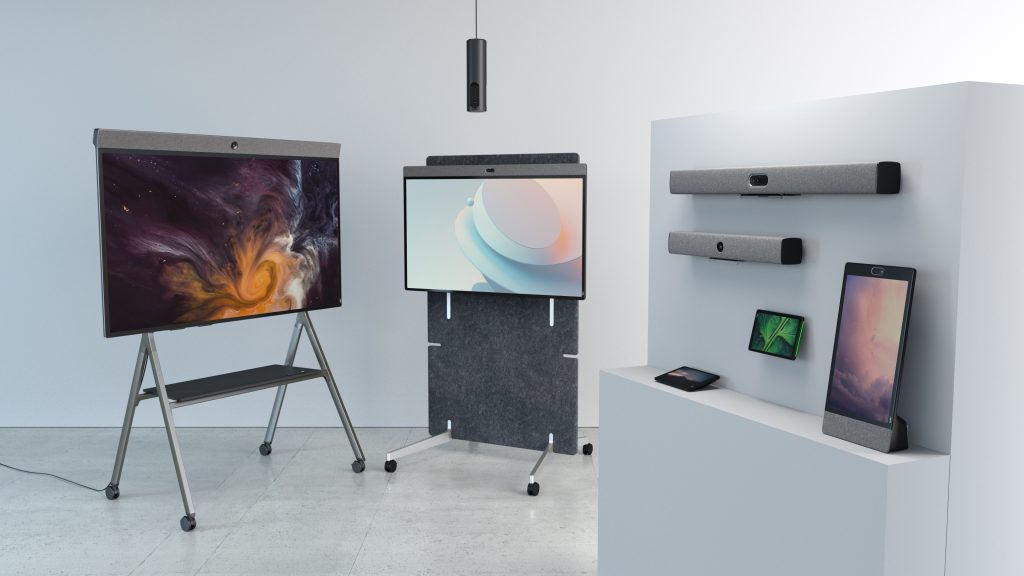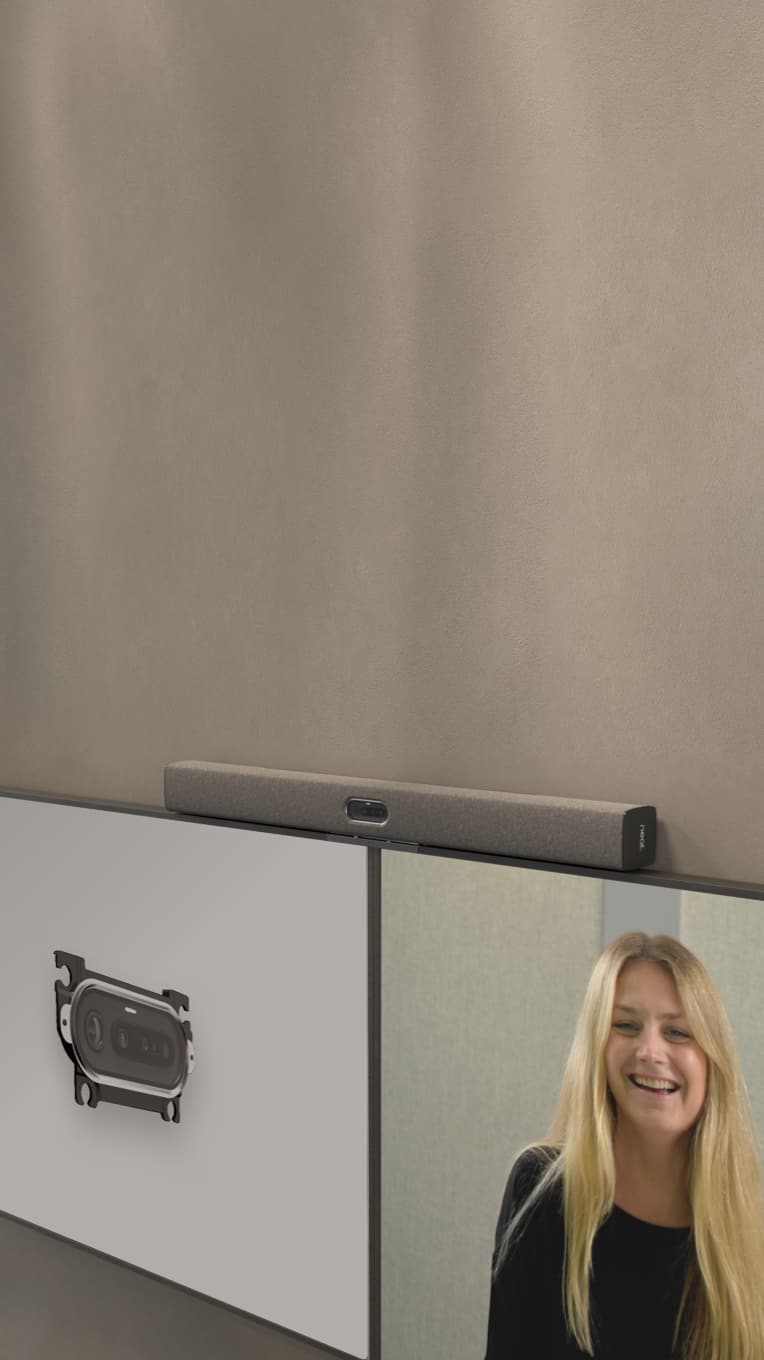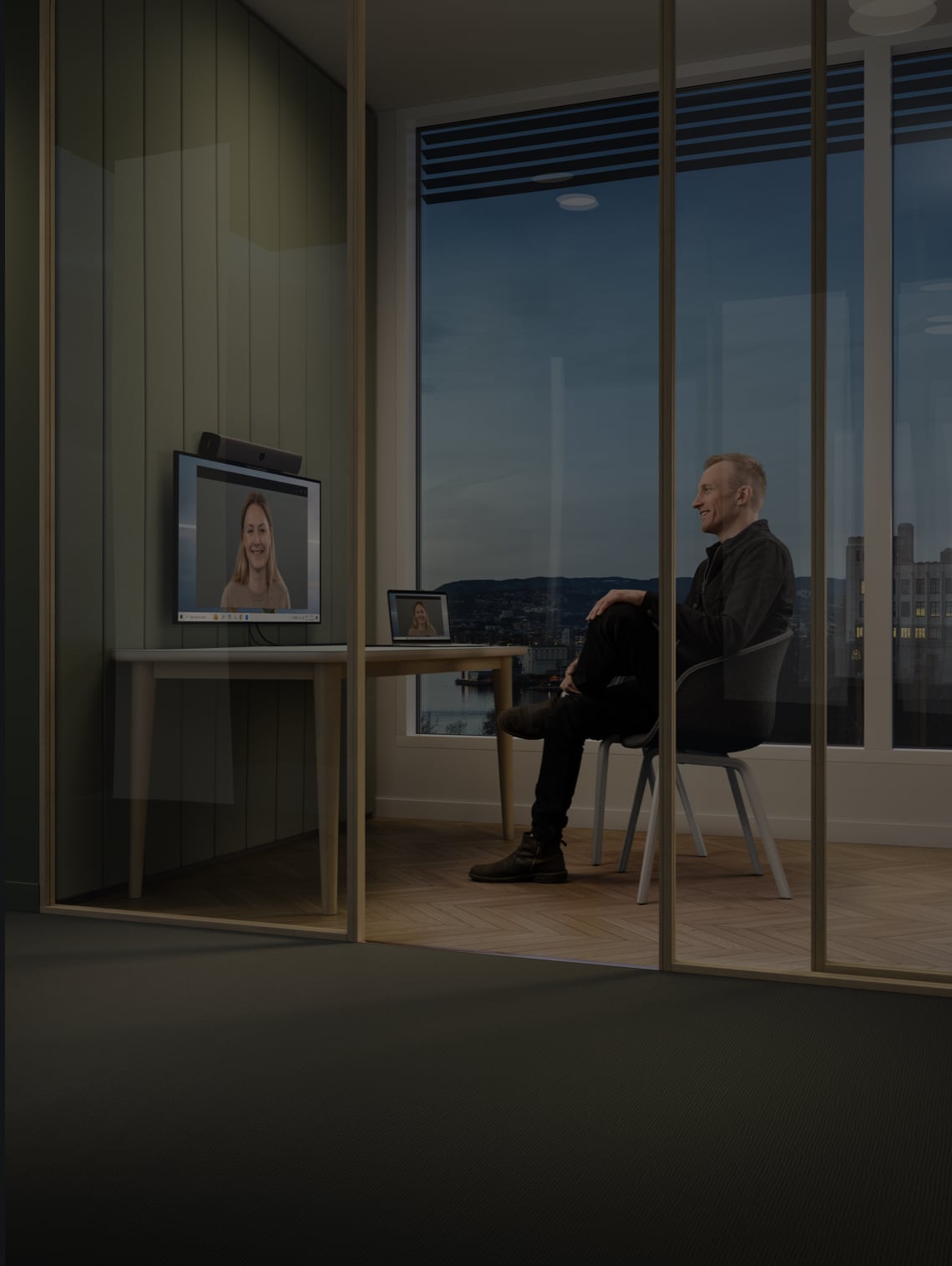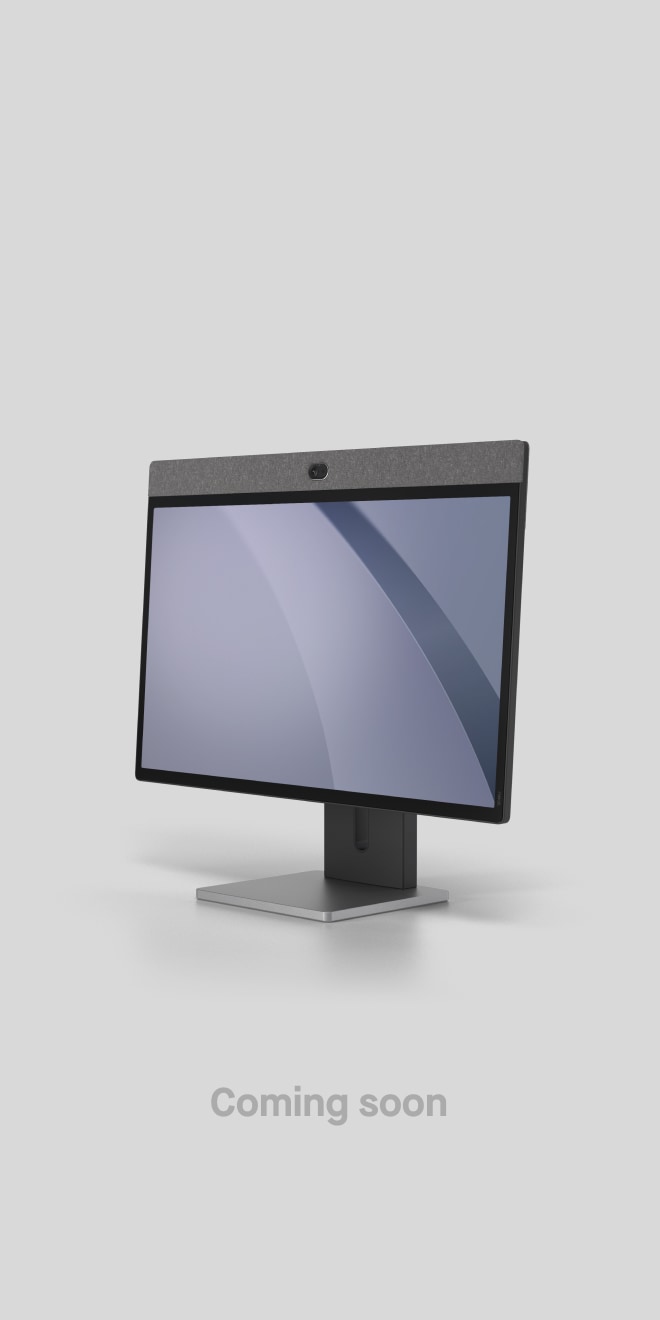The Future of Hybrid Work: Why Video Conferencing Is Key
Neat, Jun 2, 2025

Key takeaways
- Hybrid work is the dominant model in 2025, blending flexibility with in-person collaboration.
- Video conferencing for hybrid work is foundational to productivity, team cohesion, and communication.
- Hybrid workplace technology including AI, cross-platform tools, and immersive experiences – is evolving rapidly.
Introduction: A new era of work
Hybrid work isn’t just a trend – it’s the standard. In 2025, organizations across industries are embracing hybrid work solutions that empower employees to work from anywhere while still fostering in-person collaboration. This new model blends the best of both worlds: the flexibility of remote work and the connectivity of office-based teamwork.
At the heart of this shift lies one critical enabler: video conferencing. As organizations scale their hybrid work models, investing in robust, easy-to-use, and future-proof video conferencing tools is no longer optional – it’s essential.
In this post, we’ll explore why video conferencing is the cornerstone of hybrid work, how hybrid workplace technology is evolving, and why Neat’s purpose-built devices are uniquely positioned to help companies succeed in this new era.
Why hybrid work is here to stay
The hybrid model has proven its resilience and appeal to both employees and employers. According to a 2025 global survey by Gartner, over 70% of companies now operate on a hybrid model. Employees cite flexibility, better work-life balance, and reduced commuting as top reasons for preferring hybrid arrangements.
From a business perspective, hybrid work allows organizations to tap into wider talent pools, reduce real estate costs, and build more resilient operations. However, for hybrid work to thrive, organizations must overcome one major challenge: keeping everyone aligned, engaged, and productive – regardless of location.
That’s where video conferencing for hybrid work becomes vital. It enables face-to-face communication, drives culture, and ensures seamless collaboration across distributed teams.
Video conferencing is the glue that holds hybrid teams together
Without strong communication tools, hybrid teams risk becoming disconnected and inefficient. Email and chat alone can’t replace the nuance and immediacy of live interactions. Video conferencing bridges this gap by enabling real-time, face-to-face discussions across locations.
In 2025, video conferencing has evolved far beyond grainy images and lagging audio. Today’s systems deliver high-definition visuals, crisp sound, and intelligent features that replicate the feeling of in-person meetings. These advancements ensure that hybrid teams remain collaborative and connected.
Companies like Neat are redefining what’s possible in this space. Neat’s video collaboration devices are engineered specifically for hybrid work, with features like auto-framing cameras, intelligent noise suppression, and one-touch join experiences that eliminate technical barriers to great meetings.
Key features of modern hybrid workplace technology
To support hybrid work, video conferencing systems must do more than just connect calls – they must offer a seamless, intelligent, and inclusive experience. Let’s explore the essential elements of hybrid workplace technology in 2025:
AI-powered meeting enhancements
Artificial intelligence is transforming video meetings. AI tools now offer real-time transcription, automatic summarization, facial recognition, and even sentiment analysis to improve engagement.
Neat integrates AI directly into its devices to automate framing, track speakers, and suppress background distractions – making sure every participant feels heard and seen.
Cross-platform compatibility
Hybrid teams often use a variety of collaboration platforms – Zoom, Microsoft Teams, Google Meet, and more. A high-quality video system must work seamlessly across these platforms.
Neat’s Bring Your Own Device (BYOD) support lets users connect their preferred conferencing app to any Neat device without compatibility issues. This flexibility is a game-changer for dynamic work environments.
Immersive, inclusive experiences
Today’s video conferencing tools aim to replicate the experience of being in the same room. Features like ultra-wide-angle cameras, spatial audio, and 3D virtual environments help build presence and engagement.
Neat delivers immersive experiences with powerful audio pickup, sharp visual detail, and smart framing that keeps remote participants front and center. This helps remote employees feel equally valued.
Scalability and ease of use
As hybrid work becomes standard, companies need solutions that are easy to deploy, manage, and scale across locations. Neat devices offer simple installation, intuitive interfaces, and centralized management tools that let IT teams monitor and control devices remotely.
From small huddle spaces to large boardrooms, Neat’s portfolio is designed to scale with your business needs.

The impact of video conferencing on collaboration
The shift to hybrid work has elevated the importance of collaborative technology. Video conferencing plays a pivotal role in:
- Fostering strong team culture across distances.
- Enabling real-time problem solving.
- Reducing miscommunication.
- Supporting visual collaboration through screen sharing and whiteboarding.
With tools like Neat Board 50 and Neat Frame teams can brainstorm, present, and engage just as they would in person. These devices go beyond simple video calls – they empower teams to collaborate creatively and effectively, no matter where they are.
Addressing hybrid work challenges
Hybrid work isn’t without its hurdles. Organizations must address issues like:
- Meeting equity: ensuring remote participants have an equal voice
- Video fatigue: reducing cognitive overload from excessive meetings
- Technical complexity: managing multiple platforms and devices
Neat is designed to solve these pain points. Its technology delivers smooth, consistent experiences across all meeting spaces, minimizes setup time, and enhances meeting equity through AI-powered features that focus on every participant.
Neat devices are also certified by leading platforms like Zoom and Microsoft Teams, ensuring reliability and compatibility.
Sustainability and hybrid work
Hybrid work supports sustainability by reducing commuting, lowering office energy use, and shrinking carbon footprints. In 2025, companies are placing even greater emphasis on eco-conscious operations.
Neat contributes to these efforts with energy-efficient hardware and support for remote diagnostics that reduce the need for on-site servicing. By enabling high-quality virtual meetings, Neat devices also help reduce business travel, making it easier for companies to meet their sustainability goals.
Why investing in the right video conferencing tools matters
As organizations refine their hybrid strategies, the tools they invest in will determine their success. High-quality video conferencing for hybrid work drives better outcomes in employee engagement, talent retention, and overall performance.
Neat devices stand out by offering:
- Exceptional audio and video clarity.
- Seamless integration with top collaboration platforms.
- Scalable deployment across varied room sizes.
- Intuitive user experiences.
These advantages translate to real business value – fewer missed cues, more productive meetings, and happier teams.
The future of remote work and hybrid collaboration
Looking forward, hybrid work will continue to evolve with the help of smarter technology and new cultural norms. We can expect:
- Greater use of AI to automate routine tasks.
- More personalized work experiences driven by data.
- Enhanced collaboration through AR/VR integrations.
- Further decentralization of teams across geographies.
Video conferencing will remain at the center of this transformation. And companies that embrace high-quality, flexible tools will be best positioned to thrive.
Conclusion: Making hybrid work, work
The future of remote work isn’t fully remote – it’s hybrid. To make this model sustainable and successful, organizations must invest in robust hybrid work solutions that prioritize communication, inclusivity, and collaboration.
Video conferencing is the linchpin that connects people, ideas, and outcomes. With Neat’s innovative video collaboration devices, companies can create high-quality conference experiences that empower teams and fuel growth.
As hybrid workplace technology continues to evolve, Neat will be at the forefront – making work more human, connected, and effective, no matter where it happens.






